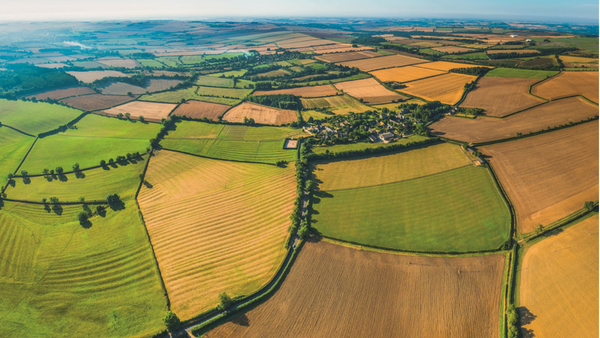Author
Two recent planning cases have shed new light on how the planning assumptions contained within sections 14 to 16 of the Land Compensation Act 1961 (“LCA 1961“) should be applied in conjunction with the Pointe Gourde principle. The cases are:
- Homes and Communities Agency v J S Bloor (Wilmslow) Ltd [2017] UKSC 12; and
- Boland v Bridgend CBC [2017] EWCA Civ 1004
The Pointe Gourde principle has previously been considered but in summary provides that market value assessed under section 5 of the LCA 1961 cannot include any increase in value attributable to the underlying scheme of an acquiring authority.
JS Bloor case: The facts
JS Bloor was the former owner of two plots of grazing land, acquired together with an additional adjacent parcel of land for a total of £1.3m (“the Land“). The Land was earmarked for the development of the ‘Kingsway Business Park’.
As set out in the North West Development Agency’s 2002 ‘Regeneration Prospectus’ Kingsway Business Park is a 170ha site in Rochdale adjacent to Junction 21 of the Trans-Pennine M62, originally in 75 separate ownerships.
Eventually, the Acquiring Authority (a predecessor to the Homes and Communities Agency (“HCA“)) acquired the Land by General Vesting Declaration on 4 January 2006 pursuant to ‘The North West Development Agency (Kingsway Business Park, Rochdale) Compulsory Purchase Order 2002’, made 15 May 2002, and confirmed on 5th October 2004
The Land had an elaborate and rather hopeless planning history commencing in the 1960s, including various allocations, and an unsuccessful application for housing. The latter perhaps not terminally, as that application was turned down on the basis that it was not part of a comprehensive development.
As at the valuation date the applicable planning documents included: Regional guidance (RPG13) approved in March 2003; and the Rochdale Unitary Development Plan (“UDP“) adopted in March 1999. The Land was listed in RPG13 as one of 11 Strategic Regional Sites, and allocated under the UDP, which allowed for individual development if it was compatible with the objective of a strategic business park development; and or “limited residential development … provided it is part of a comprehensive development scheme for predominantly business uses …”.
In August 2006 JS Bloor made an application for a Certificate of Appropriate Alternative Development, which was recommended for refusal on the basis of a failure to comply with the UDP, the application was then withdrawn.
The decisions
At the Upper Tribunal (Lands Chamber) (“UT“) the battle lines were drawn around the difference between the existing use value, said by the Acquiring Authority to be around £50,000 and the development value, said by JS Bloor to be elevated by hope to around £2.6 million.
The UT awarded £746,000, the Court of Appeal remitted the matter back to the UT applying the law in a different manner (in the Acquiring Authority’s favour), commenting that the UT “…appears to have overvalued the reference land for the purposes of compensation”.
The Court of Appeal was of the view that the UT had incorrectly applied weight to ‘the extensive policy support for residential development on part of the reference land’, because it should have stripped out (arguably) all potential for such development on the basis of the Pointe Gourde principle.
The Court of Appeal’s view was that the UT should have considered the planning potential of the reference land, without regard to the development scheme and its underlying policies and therefore its effect on value. In that no scheme world it should have examined what wider no scheme specific policies might apply, but should not apply the current and emergent UDP because that was the basis of the Order.
The Supreme Court restored the UT’s original decision. The Supreme Court was of the view that the Court of Appeal should not have treated the required disregard of the scheme as extending also to all the policies, past and present, which supported development on the Land. The Supreme Court endorsed the approach of the UT in taking account of the “historic, current and emerging policies” promoting a business park, and considering “the extensive policy support for residential development” on the Land.
The Supreme Court endorsed the approach of the UT, commenting that the Tribunal:
“…properly took account of the pattern of development as seen by them on the ground, and the long history of identification of this land for substantial development. They did not ignore potential policy objections, such as under or policy EC/6, but took the view that they would not have sufficient weight to rule out the possibility of development in the absence of the KBP scheme. That reasoning discloses no error of law.”
The Supreme Court also considered submissions made on behalf of the HCA that effectively the market value disregards (including the Pointe Gourde principle) applied not only to the assessment of compensation under Section 5 of the 1961 Act, but also to the planning assumptions in sections 14 – 16 of that Act. The result of such a submission, if successful, would have been that the planning status of the Land would be fixed by the scheme of development envisaged under the Order, but no compensation (reflecting any uplift) would have been payable, because that planning status was due to the scheme itself.
By way of example, if land was acquired for purpose X, that was the only planning consent applicable to the subject land, and as such purposes Y, or Z could not be considered, but an uplift in value due to purpose X could not be recovered either. The Supreme Court confined the application of the Pointe Gourde principle to the assessment of compensation under section 5 stating:
“The statutory assumptions work only in favour of the landowner, not against him, and do not deprive him of the right to argue for prospective value under other provisions or the general law.”
The Boland v Bridgend CBC case
That application has also recently been considered by the Court of Appeal with regard to section 17 of the 1961 Act in Boland v Bridgend CBC [2017] EWCA Civ 1004:
“In considering a section 17 application, a decision-maker must proceed on the basis that the relevant scheme for development in the public interest is cancelled, so far as the land that is the subject of the proposed compensation assessment is concerned, at the date of the notice that it is proposed to acquire the land compulsorily. The ‘no scheme world’ is confined to the assessment of compensation under Part II of the 1961 Act, which involves the consideration of broader factors than does section 17 in Part III.”
Is this now ancient history?
In JS Bloor Lord Carnwath points out that the complexities in these matters may be resolved by the changes to sections 14 – 18 of the CPA 1961 first brought about by the Localism Act 2011 s.232, and more recently to section 5 by the Neighbourhood Planning Act 2017 section 32 (see also previous article).
The current drafting of section 14 of the CPA 1961 defines the approach to deciding the scheme of development underlying the acquisition:
(8) If there is a dispute as to what is to be taken to be the scheme mentioned in subsection (5) (“the underlying scheme”) then, for the purposes of this section, the underlying scheme is to be identified by the Upper Tribunal as a question of fact, subject as follows—
(a) the underlying scheme is to be taken to be the scheme provided for by the Act, or other instrument, which authorises the compulsory acquisition unless it is shown (by either party) that the underlying scheme is a scheme larger than, but incorporating, the scheme provided for by that instrument, and
(b) except by agreement or in special circumstances, the Upper Tribunal may permit the acquiring authority to advance evidence of such a larger scheme only if that larger scheme is one identified in the following read together—
(i) the instrument which authorises the compulsory acquisition, and
(ii) any documents published with it.
Although the wording of subsection 8 above is pleasantly clear, the essence of the exercise, which the tribunal needs to undertake, is essentially unchanged. The tribunal needs to consider (on the basis that it is deciding appropriate alternative development):
- The extent of ‘the scheme’.
- The planning ‘alternative reality’ without the scheme.
- The planning policies which might apply in the ‘alternative reality’.
- The likelihood of those policies applying (and permitting development).
- The extent to which the value of subject land might be increased in the ‘alternative reality’.
The difference in the law now is that the tribunal assesses value based on the assumption that: at the relevant valuation date, planning permission for the development could reasonably have been expected to be granted, even though no action has been taken (including acquisition of any land, and any development or works) by the acquiring authority wholly or mainly for the purposes of the scheme.
This effectively excludes arguments that the scheme is cancelled in respect of the subject land alone, but not surrounding land, and as such the subject land benefits from uplifts in value due to the scheme as a result of things like improved infrastructure.
Conclusions
The conclusions which can be drawn from these two decisions include the following:
- As previously stated, if ‘the scheme’ is actually the only ‘game in town’ with regard to any particular package of land, then it will fall to be disregarded, and the claimant left with perhaps only a small additional sliver of hope value in addition to the base value.
- On the other hand, if (as happened in JS Bloor) development opportunities abound whether the compulsory scheme occurs or not, a more substantial slice of hope value might be added to the base value.
- Clearly, and rather encouragingly, in JS Bloor the Supreme Court was keen to uphold the findings of fact of the UT, in the circumstances where the panel brought its expertise to bear, following a detailed analysis of the applicable planning policies and development potential.
- The tribunals need material upon which to decide these matters, highlighting the importance of well researched credible expert evidence, and elegant case presentation.
- The matters raised in this article clearly demonstrate the value in landowners coming together to promote development land, or else risk losing out on the opportunity to benefit from uplifts in value due to development potential.
For more information please contact Adam Corbin, Barrister and Senior Associate in the Agriculture team.

